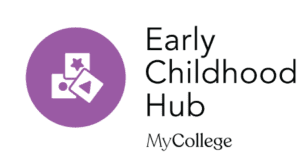How Montessori, Reggio Emilia and Mantle of the Expert support children’s agency in their learning

Soizic Le Courtois and Sara Baker, Centre for Research on Play in Education, Development and Learning at the Faculty of Education, University of Cambridge, UK
Introduction
When children have agency in learning, they are experiencing learning as a participant rather than as a recipient, and as an activity in which they willingly engage rather than something externally imposed. Agency in learning involves being empowered and able to contribute to the direction and form that learning takes. However, opportunities for children’s agency in classroom environments can be scarce. This can be because of its absence from the National Curriculum (see, for example, the National Curriculum in England, DfEDepartment for Education - a ministerial department responsible for children’s services and education in England, 2014, as demonstrated by Manyukhina and Wyse, 2019), and our own work in classrooms in England suggests that children’s agency is often restricted by tight teacher control through a focus on strict learning objectives and standards (Le Courtois, 2022).
Yet recent research has highlighted the importance of children’s agency in learning (Jerome and Starkey, 2022; Adair, 2014; Mercer, 2011), as well as its emergent and relational nature (Baker et al., 2021). Agency arises from the interaction between enabling environments, supportive relationships and an inner experience. As such, agency cannot be supported by following precise methods, because it depends on a multitude of factors, including relationships, contexts and how children and adults interpret events in the classroom. Therefore, the ways in which children can experience agency in the classroom are varied. By providing examples of what agency might ‘look’ like in different contexts and how it is fostered differently through distinct pedagogies, we aim to create avenues for exploring agency in learning rather than providing prescriptive methods. To do this, we illustrate how children’s agency might be supported within three established pedagogies: Montessori, Reggio Emilia (or Reggio-inspired classrooms) and Mantle of the Expert.
We have argued elsewhere (Baker et al., 2021) that pedagogies that are centred on the child’s experience of learning as active, willing, pleasurable, flexible and meaningful activate and support two important psychological mechanisms: (1) inner motivation, or children’s inner drive to learn (Ryan and Deci, 2000), and (2) self-regulation, which is the ability to deliberately guide thoughts, emotions, behaviour and attention (McClelland and Cameron, 2011). The combination of motivation and self-regulation allows children to make plans and follow through with them. In addition, in order to exercise their agency, individuals need opportunities – or ‘affordances‘ – for agency (Manyukhina and Wyse, 2019). Each of the pedagogies presented here focuses on affordances for students’ agency in learning and how they leverage self-regulation and motivation.
Montessori and agency in learning
Montessori is one of the most widespread alternative pedagogies in the Western world. Based on a view of the child as capable and eager to learn, Montessori pedagogy relies on a structured, prepared environment where children can access clearly organised activities at different levels of difficulty. Montessori Early Years education emphasises children’s inherent curiosity to learn and desire to master specific skills. Children have large amounts of freedom within a structured environment, i.e. freedom within boundaries (Lillard, 2019). For example, children do not follow a timetable and strict edicts set by the teacher, and instead are free to choose what activities to do and for how long and with whom. The focus of the activities is the development of specific competences that children are intrinsically motivated to master (Lillard, 2013). As such, it has playful characteristics of active learning, based on children’s willingness to start and stop activities that are pleasurable, flexible and meaningful. Research has shown it to be an effective way of supporting children’s self-regulation and social cognition, above and beyond typical approaches to early childhood education (Lillard and Else-Quest, 2006).
In Montessori education, the teacher’s role is to prepare an environment that will allow children to engage in stimulating activities and to observe the child in order to understand how their interests and their needs develop on an individual basis. This paves the way for teachers to introduce specific activities and materials for which children might be ready at opportune times, and to show the children how to use them. Children also learn by watching peers engaged in activities and by working together, and Maria Montessori emphasised the importance of the social context for learning (Montessori, 1989).
Montessori materials and pedagogy support self-regulated learning because they offer children an entry point into, and ongoing support for, making decisions for themselves and thinking about their own learning. Children are able to follow their own interests, and their inner motivation is supported because it allows children to exert control over their learning while maintaining their sense of competence (Ryan and Deci, 2000; Lillard, 2019). For example, structure in the physical environment is thought of as another teacher. Materials are freely accessible on open shelves, arranged in an order that is logical for the child, such as from least to most challenging. Children’s concentration is protected from distractions by the use of work mats and being free from interruption. This allows children to maintain their focus on tasks that matter to them – in other words, to meet goals that they have set themselves. These features of Montessori education support children’s agency by giving them control over large portions of their time and making them central actors in their learning journey, endorsing each activity with which they engage. Their agency emerges from their natural curiosity, the support from the teacher and the pedagogical materials, as well as how they are organised and presented.
Reggio Emilia and agency in learning
Like Montessori, Reggio Emilia is characterised by a strong belief in the natural capacities of the child to be curious and to seek knowledge (McNally and Slutsky, 2017). The Reggio Emilia approach also focuses on the myriad ways in which children express themselves, including non-verbal forms of communication like painting and dramatic play. Connected with this idea, there is a strong emphasis placed on learning activities within the social and cultural environment of the child. The Reggio Emilia approach embraces the child’s multiple ways of expressing themselves, which leads to a flexible and meaningful learning experience.
In Reggio classrooms, the teacher plays an important role in stimulating and supporting the child’s learning, rather than directing it, and in observing children and adapting the learning environment and opportunities to meet their needs and interests as they emerge (McNally and Slutsky, 2017). Like in Montessori classrooms, children play an active role in steering their own learning. Kim and Darling (2009) give the example of a group of four-year-old children studying a Monet painting in a Reggio-inspired classroom and discussing whether figures in the poppy field can be people if their eyes are not visible. Rather than positioning themselves as the holder of the ‘right’ answer and correcting the children straight away, the teacher encouraged the children to assess their own theories by inviting dialogue, and giving children opportunities to make their own observations about what happens when someone stands far away. The teacher also invited an artist to talk about perspective – for example, how objects are smaller and may be painted more blurry to show that they are far away.
In Reggio-inspired classrooms, teachers build learning opportunities onto children’s interests, and the curriculum is co-constructed with children rather than prescribed. This exercises the children’s self-regulation and inner motivation. The children’s agency lies in their position as valued, active participants in these conversations, whose curiosity and inner drive to learn are cultivated by the teacher and nourished by being shared with other children. Negotiation affords children the possibility to experience agency because their voice and influence are valued (Seigel, 2001). Therefore, learning activities and classroom decisions can be experienced as stemming from internal forces rather than imposed from the outside, and by following children’s interests and curiosity, teachers can support children’s intrinsic motivation in learning.
Mantle of the Expert and agency in learning
Mantle of the Expert (MoE) is a form of dramatic inquiry: children work collaboratively as a community of learners to solve problems and carry out tasks within a fictional context – that is to say that they are given the fictional role (the mantle) of experts within this imagined context and given responsibility, in a guided manner, to respond to a ‘commission’ for a fictional client (Heathcote, 1995). For example, children may take on the role of zoo keepers, learning about habitats, hygiene, food webs and animal classification, as well as handling maths and writing and reading around the topic.
Like Montessori and Reggio Emilia, MoE draws on children’s natural curiosity to pursue learning. The approach emphasises the shared nature of enquiry, where children willingly respond to invitations from the teacher. In this sense, the MoE approach is flexible; it allows children to bring their own meaning into their learning, and children actively and willingly participate in defining the scope of the activity. Positioning, referring to how power might be shared between the teacher and children, is reflected in an invitation for imagination, for instance, rather than an imposition (e.g. ‘If you were park rangers, what sorts of animals would you want to look after?’ (Taylor, 2016)). The teacher is tasked with the careful work of providing the right amount of support and structure at the right time. For example, Taylor (2016) shows how the teacher’s positioning impacts on the unfolding of two scenarios based on the three little pigs and the big bad wolf. In one, the teacher offered no frame beyond the initial set-up, and the dramatic tension quickly evaporated, with the children losing interest after a few minutes of vengeful punishing of the wolf. In comparison, in another scenario, the teacher introduced dramatic tension with (fictional) binoculars and a den from which to observe the wolf. This additional scaffoldingProgressively introducing students to new concepts to support their learning by the teacher led to extended engagement, negotiation and action on the children’s part.
While the teacher can plan tasks and activities according to some learning goals, these respond to events that unfold in the fiction, and the fiction itself leaves space for children to make decisions and follow interests, and for the unexpected to arise. In short, MoE makes space for children’s agency because the children share the control; they literally participate as actors in the scenarios that unfold, and they willingly endorse the imagined events. Children’s motivation is apparent through their questioning and initiative (e.g. Collins, 2013; see also Fraser et al., 2013). MoE also exercises self-regulation, as children negotiate how the company will respond to events, devise ideas and plans, listen to different views, shift from task to task, reflect and think hypothetically, weigh up options, set goals and achieve them. In our view, MoE is an approach that can foster agency in learning by focusing in particular on the shared sense of control, making learning flexible and active for children.
Conclusion
Children’s agency is about children being empowered to take their learning into their own hands. This requires opportunities for agency, supporting children’s ability to self-regulate and to feel like competent participants in their learning, as well as fostering their inner motivation to learn. In our research, we consider that supporting children’s agency relies on adults providing support, stimulation and space for children’s ideas, interests and initiatives (Baker et al., 2021). It also requires teachers to adopt an inquiry mindset so that they can question what is happening in the classroom, listen to children’s many ways of expressing themselves and adapt activities and the learning environment accordingly. As illustrated in this article, this may be done in many different ways. There is no one-size-fits-all recipe for agency in learning, and in fact adults must constantly respond to the needs of the children in their classrooms. As Loris Malaguzzi (the founder of the Reggio Emilia approach) noted:
There’s a difference between the environment that you are able to build based on a preconceived image of the child and the environment that you can build that is based on the child you see in front of you – the relationship you build with the child, the games you play.
(Malaguzzi, 1994, p. 1)
It is this responsiveness and ability to listen to children that makes it possible for children’s agency in learning to flourish.
We are grateful to Janina Eberhart, Dee Rutgers, Barbara Isaacs (Montessori), Marianne Valentine (Reggio Emilia) and Tim Taylor (Mantle of the Expert) for feedback received on early drafts of this manuscript.
References
- Adair JK (2014) Agency and expanding capabilities in early grade classrooms: What it could mean for young children. Harvard Educational Review 84(2): 217–241.
- Baker ST, Le Courtois S and Eberhart J (2021) Making space for children’s agency with playful learning. International Journal of Early Years Education 1–13. Epub ahead of print 23 November 2021. DOI: 10.1080/09669760.2021.1997726.
- Collins HE (2013) The impact of MoE on children’s writing. MA Dissertation, Bishop Grosseteste University, UK.
- Department for Education (DfE) (2014) The National Curriculum in England: Key stages 1 and 2 framework document. Available at: www.gov.uk/government/publications/national-curriculum-in-england-primary-curriculum (accessed 17 May 2022).
- Fraser D, Aitken V and Whyte B (2013) Connecting Curriculum, Linking Learning. Wellington, New Zealand: New Zealand Council for Educational Research Press.
- Heathcote D (1995) Drama for Learning : Dorothy Heathcote’s Mantle of the Expert Approach to Education. Portmouth, NH: Heinemann.
- Jerome L and Starkey H (2022) Developing children’s agency within a children’s rights education framework: Ten propositions. Education 3–13 50(4): 439–451.
- Kim BS and Darling LF (2009) Monet, Malaguzzi, and the constructive conversations of preschoolers in a Reggio-inspired classroom. Early Childhood Education Journal 37(2): 137–145.
- Le Courtois S (2022) Fostering and capturing children’s inner motivation to learn in the early primary classroom in England. PhD Thesis, University of Cambridge, UK.
- Lillard AS (2013) Playful learning and Montessori education. American Journal of Play 5(2): 157.
- Lillard AS (2019) Shunned and admired: Montessori, self-determination, and a case for radical school reform. Educational Psychology Review 31(4): 939–965.
- Lillard A and Else-Quest N (2006) The Early Years: Evaluating Montessori education. Science 313(5795): 1893–1894.
- Malaguzzi L (1994) Your image of the child: Where teaching begins. Available at: www.reggioalliance.org/downloads/malaguzzi:ccie:1994.pdf (accessed 17 May 2022).
- Manyukhina Y and Wyse D (2019) Learner agency and the curriculum: A critical realist perspective. The Curriculum Journal 30(3): 223–243.
- McClelland MM and Cameron CE (2011) Self-regulation and academic achievement in elementary school children. New Directions for Child and Adolescent Development 2011(133): 29–44.
- McNally SA and Slutsky R (2017) Key elements of the Reggio Emilia approach and how they are interconnected to create the highly regarded system of early childhood education. Early Child Development and Care 187(12): 1925–1937.
- Mercer S (2011) Understanding learner agency as a complex dynamic system. System 39(4): 427–436.
- Montessori M (1989) 1946 London lecture: Children, teachers and society. In: The Child, Society and the World. Oxford: Clio Press Ltd.
- Ryan RM and Deci EL (2000) Self-determination theory and the facilitation of intrinsic motivation, social development, and well-being. American Psychologist 55(1): 68–78.
- Seigel S (2001) To be part of something bigger than oneself. In: Giudici C, Rinaldi C, Krechevsky M et al. Making Learning Visible: Children as Individual and Group Learners. Cambridge, MA: Project Zero, Harvard Graduate School of Education; Reggio Emilia, Italy: Reggio Children, International Center for the Defense and Promotion of the Rights and Potential of all Children.
- Taylor T (2016) A Beginner’s Guide to Mantle of the Expert: A Transformative Approach. Norwich: Singular Publishing Ltd.










